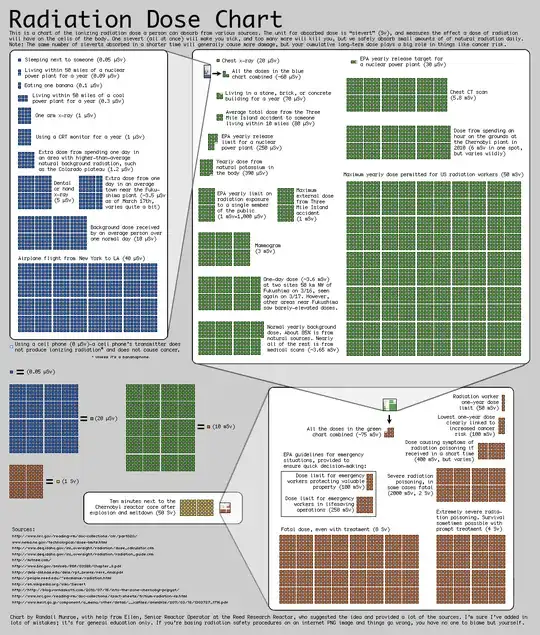The answer to your first question is already in the article you linked. It contains the following referenced quote:
In fact, the fly ash emitted by a power plant—a by-product from burning coal for electricity—carries into the surrounding environment 100 times more radiation than a nuclear power plant producing the same amount of energy.
The paper referenced in the article is here: http://www.sciencemag.org/content/202/4372/1045.short
Radiation doses from airborne effluents of model coal-fired and nuclear power plants (1000 megawatts electric) are compared. Assuming a 1 percent ash release to the atmosphere (Environmental Protection Agency regulation) and 1 part per million of uranium and 2 parts per million of thorium in the coal (approximately the U.S. average), population doses from the coal plant are typically higher than those from pressurized-water or boiling-water reactors that meet government regulations. Higher radionuclide contents and ash releases are common and would result in increased doses from the coal plant.
The paper itself states that this result is only valid not considering nuclear accidents and nuclear waste, nor it considers non-radiological effects:
The study does not assess the impact of non-radiological pollutants or the total radiological impacts of a coal versus a nuclear economy.
Regarding your second question, it can be answered easily:
- The paper itself speaks about Uranium and Thorium being released by normal operation in less than 10 parts per million - very very low doses
- A bad nuclear accident leaves kilograms or tons of radioactive elements exposed or emitted
- Typically nuclear waste is composed of tons of material
So it is clear that a single nuclear accident widely offsets any "gains" obtained by using a nuclear plant instead of a coal plant.
Furthermore, the average radiation we all get by "living" makes the normal power plant emissions irrelevant:
- Living within 50 miles (~80 km) of a nuclear reactor (1 year): 0.09 µS;
- Living within 50 miles (~80 km) of a coal plant (1 year): 0.3 µS;
- Daily average radiation: 10 µS;
- Living in within 30 km of Chernobyl before evacuation (10 days): 3-150 mS
The first three are data from the image below, the third comes from from Reconstruction of the inhalation dose in the 30-km zone after the Chernobyl accident
Thanks to Borror0 for the great find. To put things in perspective see the following infograph. At the top left, in blue, you can see the radiations absorbed by living next to a (nuclear|coal) plant. In yellow, the radiation doses of Chernobyl - many orders of magnitude higher.

